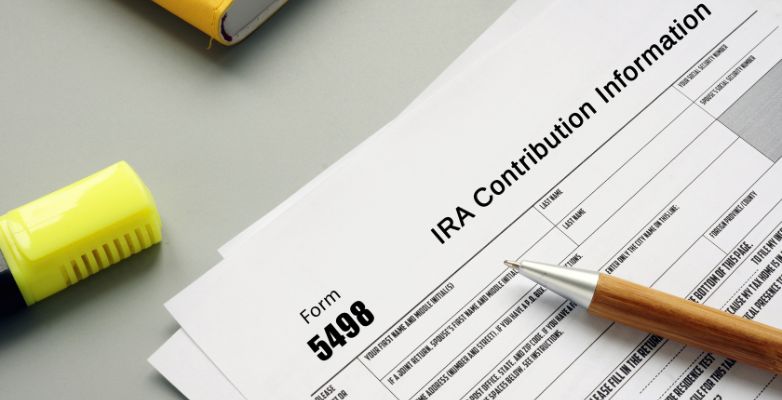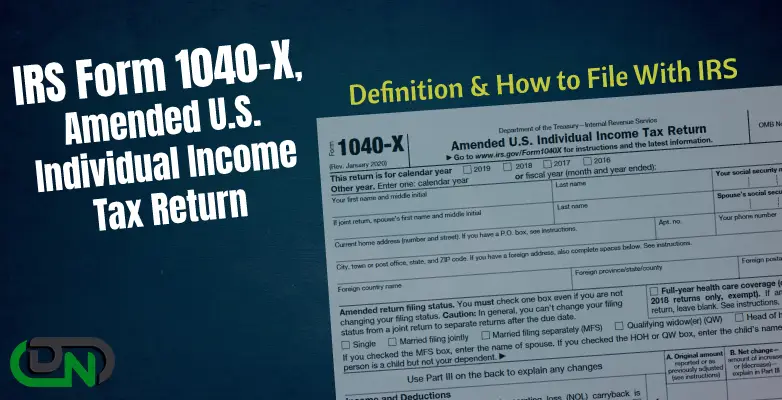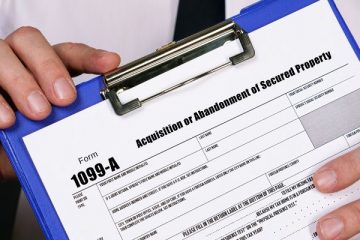If you have an Individual Retirement Account (IRA), the institution managing it must furnish you and the IRS with Form 5498: IRA Contribution Information. This document outlines your contributions, required minimum distributions (RMDs), Roth IRA conversions, rollovers, and your IRA’s fair market value (FMV).
IRS Form 5498 is typically provided in May since IRA contributions for the previous year are allowed until mid-April, just before tax filing season. It’s crucial to note that this form is for informational purposes only, and you are not required to submit it with your tax return.
Key Points:
- Form 5498 reports various IRA activities like contributions, rollovers, Roth IRA conversions, and RMDs to the IRS.
- Your IRA trustee or custodian is responsible for sending Form 5498 to both the IRS and you.
- You don’t need to take any specific action with the form; simply retain it with your tax records.
Table of Content
- 1 Who Reports IRA Contribution Information on Form 5498?
- 2 Understanding Form 5498 – Your Guide to Asset Information Reporting & Common Errors
- 3 How to Interpret Form 5498?
- 4 Conclusion
- 5 Frequently Asked Questions
- 5.1 What is IRS Form 5498, and why is it important for IRA holders?
- 5.2 Do I need to file IRS Form 5498 with my tax return?
- 5.3 What types of contributions are reported on Form 5498?
- 5.4 Can I make unlimited rollovers into my IRA?
- 5.5 What does “recharacterization” mean in the context of Roth IRAs and Form 5498?
- 5.6 When should I expect to receive Form 5498, and what do I do if I haven’t received it?
Who Reports IRA Contribution Information on Form 5498?
Form 5498 documents contributions made to IRAs for the form’s tax year. Reporting applies to various IRA types, including traditional, Roth, SEP, SIMPLE, and deemed IRAs. Deemed IRAs are employee contribution plans linked to an employer’s qualified retirement plan.
Due Date for Filing Form 5498
Form 5498, the IRS Contribution Information document, shares its due date with individual income tax returns – April 15th. This is the deadline set by the IRS for filing taxes. Taxpayers can file their returns without penalty until this date. If, for any reason, you can’t meet the April 15th deadline, you can request an extension, which typically grants an extra six months to complete Form 5498. However, it’s crucial to note that an extension does not extend the deadline for paying taxes; taxes owed must be paid by April 15th to avoid late payment penalties.
Alternative Forms to Be Aware of,
In addition to Form 5498, there are two other forms that play vital roles in U.S. taxation: Form 1099-R and Form 1099-Q.
- Form 1099-R: This form reports distributions from various financial accounts such as pensions, annuities, retirement or profit-sharing plans, IRAs, and insurance contracts. Employers, companies, and organizations use it when making payments to individuals who participated in these plans.
- Form 1099-Q: This IRS information return is utilized when payments are made from qualified education-related plans like Coverdell Education Savings Accounts and Qualified Tuition Programs. The rules for using this form align with those for Form 1099-R.
Both these forms hold significant importance for individuals involved in retirement and education plans, as the data they contain is crucial for tax calculations. Accuracy and timely filing of these forms are essential, as the IRS mandates specific filing deadlines each year.
Understanding Form 5498 – Your Guide to Asset Information Reporting & Common Errors
Form 5498 is a crucial document used to report contributions to individual retirement accounts (IRAs). The IRS relies on this federal tax form to monitor the contributions made to IRAs throughout the year, as well as to determine the total account value at year-end. It also serves to report IRA distributions, conversions from traditional IRAs to Roth IRAs, and recharacterizations of Roth IRA contributions. The deadline for submitting the 5498 tax form for the 2022 tax year is May 31st the year in which the contributions were made.
Form 5498 – Asset Information Reporting Codes and Common Errors
Starting in 2015, IRA trustees, custodians, and issuers are required to complete boxes 15a and 15b on Form 5498, IRA Contribution Information. Specific assets mandate the completion of these boxes, each with its corresponding code:
- Stock or ownership interest in a corporation not actively tradable on an established securities market.
- Short- or long-term debt obligation not traded on an established securities market.
- Ownership interest in a limited liability company or similar entity (unless tradable on an established securities market).
- Real estate.
- Ownership interest in a partnership, trust, or similar entity (unless tradable on an established securities market).
- Option contract or similar product not available for trade on an established option exchange.
- Other assets lacking readily available Fair Market Value.
- More than two types of assets (listed in A through G) are held in this IRA.
- Enter a maximum of two codes in box 15b if more than two codes apply, enter code H.
It’s important to note that IRAs containing non-marketable securities and closely held investments, where the IRA owner effectively controls the underlying assets, have a higher potential for resulting in prohibited transactions.
How Does Form 5498 Work?
IRS Form 5498 is an informative document that not only informs the IRS about your IRA contributions but also records any rollovers you might have executed.
Form 5498 provides information on:
- Recharacterizations: Any changes made to the type of IRA account.
- Conversions: Shifting funds from one type of IRA to another.
- Year-end fair market values: The value of your IRA account as of December 31st.
The form covers both deductible and non-deductible contributions. Even if contributions to a Roth IRA don’t qualify for tax deductions, they are still reported on Form 5498.
Who Uses Form 5498?
Financial institutions that manage IRAs use Form 5498 to report contributions to the IRS. Individuals who made IRA contributions in the previous tax year also receive a copy.
Form 5498 assists in determining your tax deduction for eligible IRA contributions, but it’s important to note that you might not be able to deduct the entire amount for traditional IRA contributions.
The IRS establishes contribution limits for IRAs, with the limits for tax year 2022 being $6,000 if you’re under 50 and $7,000 if you’re 50 or older. In tax year 2023, these limits increase to $6,500 and $7,500, respectively.
Types of Form 5498
- Form 5498: Reports IRA contributions, including those to SEP-IRAs, Roth IRAs, inherited IRAs, and SIMPLE IRAs.
- Form 5498-ESA: Reports contributions to Coverdell ESA plans, designed for educational expenses.
- Form 5498-SA: Pertains to health savings accounts (HSAs), Archer medical savings accounts (MSA), and Medicare MSAs.
What to Do if You Don’t Receive Form 5498?
If you haven’t received Form 5498 reporting your contributions, contact your IRA administrator. They have until May 31 to issue the form, while you have until Tax Day (usually around April 15) to make IRA contributions for the prior tax year. Ensure your administrator has your correct address and that you indeed made IRA contributions in that tax year.
How to Interpret Form 5498?
Different sections of Form 5498 provide information on various plan contributions and other details:
- Box 1: Reports contributions to traditional IRAs made in the previous tax year and up to the current Tax Day.
- Boxes 2 and 3: Document rollovers and conversions from another plan into an IRA.
- Box 7: Identify your plan type.
- Box 8: Records contributions to SEP-IRAs, including employer contributions.
- Box 9: Records contributions to SIMPLE IRAs, including employer contributions.
- Box 10: Reports contributions to Roth IRAs made in the prior tax year and up to the current Tax Day.
- Box 11: Indicates whether you must commence taking required minimum distributions (RMDs).
- Box 15a: Notes the fair market value.
Direct trustee-to-trustee transfers between the same plan types are typically not reported on Form 5498. Verify your tax return to ensure your deduction aligns with the figures on the form. If discrepancies arise, contact your plan administrator or consult a tax professional for resolution.
Requirements for Submitting Form 5498
Institutions and trustees typically must submit Form 5498 to the IRS by May 31 of the current tax year. However, there are different deadlines for certain sections of the form, with Jan. 31 being the cutoff for FMV and RMDs, and April 30 for Form 5498-ESA.
Please note that when you make contributions, you should specify the tax year to which they should apply. This might seem a bit counterintuitive since individual tax returns are traditionally due by April 15. However, you generally have until Tax Day to make contributions to your IRA and other retirement accounts for the previous tax year that ended on Dec. 31. The extended deadline gives your plan administrator the necessary time to incorporate these contributions.
What’s Contained in Form 5498: IRA Contribution Information?
- Ownership and IRA Type
- Form 5498 provides essential information, including names, addresses, and federal identification numbers for both the trustee and the participant, who is the IRA owner. The specific type of IRA is denoted by a checkmark in Box 7 on the form.
- Contributions
- All IRA contributions for the year are consolidated from various IRA types and summed up in Box 1. Certain contribution types are itemized, with Box 10 for Roth IRAs, Box 8 for SEP IRAs, and Box 9 for SIMPLE IRAs.
- Rollovers
- Box 2 documents rollover contributions. While only one rollover is permitted within a 12-month period for IRAs, there’s no limit on the dollar amount of the rollover.
- Roth IRA Conversions and Recharacterizations
- Box 3 details conversions to Roth IRAs. The converted amount doesn’t affect the annual contribution limit for IRAs, including Roth IRAs.
- Note: Since January 1, 2018, recharacterizing conversions to Roth IRAs is no longer allowed. However, you can recharacterize contributions made to one type of IRA as contributions to the other type. Instructions can be given to the trustee to transfer the contribution amount along with earnings to a different IRA, either with the same trustee or a different one. These recharacterized contributions are recorded in Box 4 of Form 5498.
- Box 3 details conversions to Roth IRAs. The converted amount doesn’t affect the annual contribution limit for IRAs, including Roth IRAs.
- Withdrawal and Distribution Information
- Individuals aged 73 (for those born between 1951 and 1959) or 75 (for those born in 1960 or later) are obliged to take required minimum distributions (RMDs) annually from their accounts. This requirement also applies to surviving spouses and minor children who inherit an IRA but opt not to roll it over into their account or withdraw the funds on a five-year schedule.
- RMDs for the current year are based on the account holder’s age and the fair market value of the account as of December 31 of the previous year. For instance, the account’s value on December 31, 2023, determines the RMD for 2024. These details are presented in Box 5 of Form 5498.
- The form further indicates (through Box 11) whether an RMD is mandatory for the year in which you receive the form. For example, the 2019 form would indicate whether an RMD is required for 2020. It also reports the calculated RMD amount (Box 12b) and the RMD date (Box 12a) as determined by the trustee.
Conclusion
In Conclusion, IRS Form 5498, IRA Contribution Information, serves as a vital document for reporting various aspects of Individual Retirement Accounts. From contributions to rollovers, conversions, and required minimum distributions, this form captures essential financial information. Understanding Form 5498 is crucial for accurate tax reporting. If you encounter any challenges or need further guidance regarding this form, don’t hesitate to consult our experts for assistance and clarity on your IRA matters.
Frequently Asked Questions
What is IRS Form 5498, and why is it important for IRA holders?
IRS Form 5498, IRA Contribution Information, is a document that reports various aspects of your Individual Retirement Account (IRA). It’s important because it provides information about contributions, rollovers, conversions, and required minimum distributions (RMDs) to both the IRS and the IRA holder.
Do I need to file IRS Form 5498 with my tax return?
No, you don’t need to file Form 5498 with your tax return. It’s an informational document for reporting purposes only. You should keep it with your tax records for reference.
What types of contributions are reported on Form 5498?
Form 5498 reports contributions made to traditional IRAs, Roth IRAs, SEP IRAs, SIMPLE IRAs, and deemed IRAs. It includes both deductible and non-deductible contributions.
Can I make unlimited rollovers into my IRA?
No, you can make only one rollover within a 12-month period for IRAs. However, there is no cap on the dollar amount of the rollover.
What does “recharacterization” mean in the context of Roth IRAs and Form 5498?
Recharacterization allows you to change a contribution made to one type of IRA (Roth or traditional) to the other type. While you can no longer recharacterize conversions to a Roth IRA as of January 1, 2018, you can still recharacterize contributions.
When should I expect to receive Form 5498, and what do I do if I haven’t received it?
You should receive Form 5498 by January 31 for the prior tax year. If you haven’t received it, contact your IRA administrator to ensure they have your correct address and that you indeed made contributions in that tax year.




